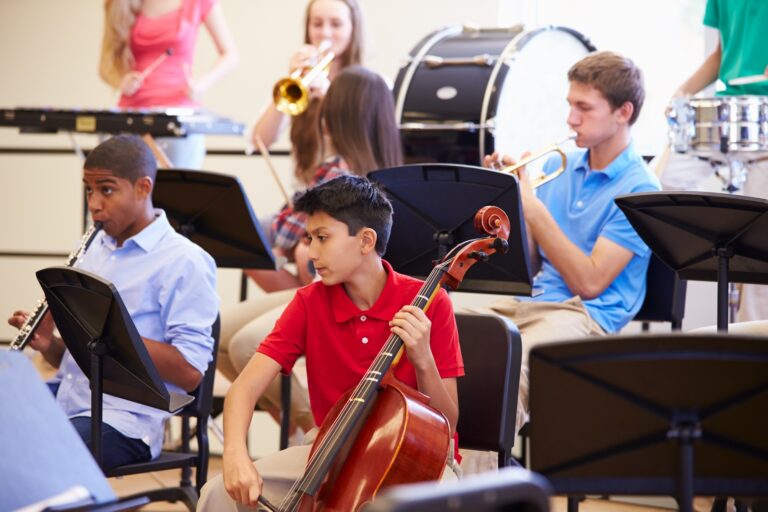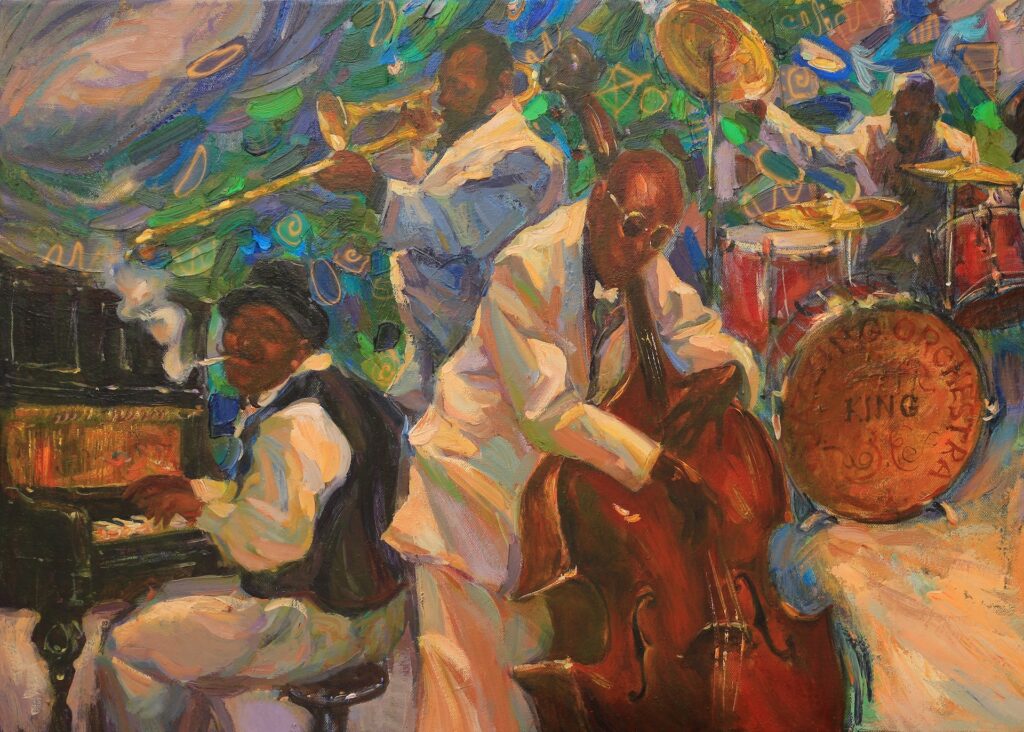
Learning jazz as a first-year band student can feel overwhelming with complex rhythms, unfamiliar chord progressions, and improvisation techniques that seem impossible to master. You’re probably wondering which pieces will help you build confidence while developing essential jazz skills without frustrating you or your ensemble.
The right selection of beginner-friendly jazz pieces can transform your first year from a struggle into an exciting musical journey that builds your technical skills and introduces you to jazz legends. These carefully chosen arrangements balance accessibility with authentic jazz elements, giving you the foundation you need to grow as a jazz musician. From classic Duke Ellington standards to modern jazz fusion hits, each piece offers specific learning opportunities that will prepare you for more advanced repertoire.
1. So What by Miles Davis – Modal Jazz for New Players
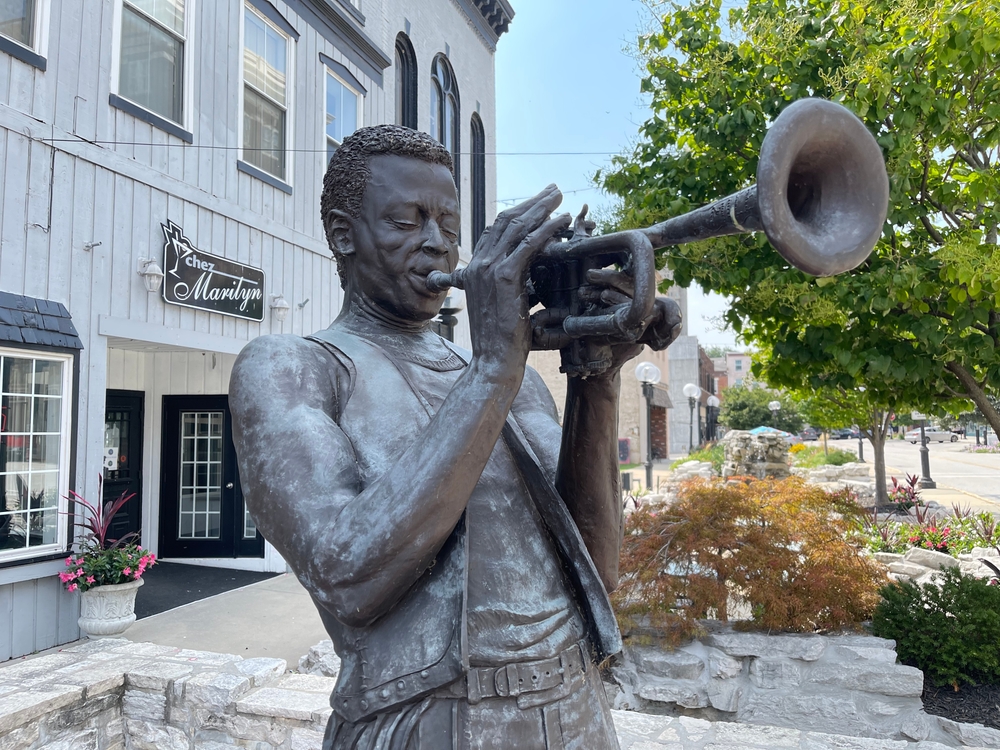
This is terrific for first-year band students interested in playing jazz because it introduces modal jazz using only two chords (D Dorian and Eb Dorian), making it one of the simplest harmonically structured jazz tunes to learn.
This simplicity helps students focus on tone, phrasing, and ensemble listening without getting overwhelmed by chord changes. The melody is repetitive and easy to memorize, and the call-and-response format builds section coordination. It’s also an excellent platform for beginner improvisation, as students can experiment with just one scale over each section. With its relaxed tempo and legendary cool-jazz vibe, So What offers a low-stress, high-reward entry point into modern jazz.
2. Best of Belwin Jazz: First Year Swing Chart
The Best of Belwin Jazz: First Year Charts Collection gives you twelve solid arrangements designed specifically for beginning jazz players. The swing charts in this collection work perfectly when you’re just starting out.
These pieces were written by experienced educational arrangers who understand what first-year students need. You’ll find the rhythms are simplified but still authentic to the swing style.
The arrangements are smart about instrumentation too. Your band will sound full and complete with minimum instrumentation of just four saxes, two trumpets, one trombone and three rhythm players.
The swing charts focus on basic jazz concepts without overwhelming you. You’ll learn fundamental swing rhythms and simple improvisation sections that build your confidence.
Each part is written at an appropriate difficulty level for beginners. The lead trumpet parts stay in a comfortable range, and the rhythm section gets clear chord symbols to work with.
The collection includes optional parts that let you adapt to your specific band size. This flexibility makes it easier for your director to use these charts regardless of how many players you have.
3. Early Bird Jazz Band’s ‘Go Slow’
Rob Birdwell composed “Go Slow” specifically for his Early Bird Jazz Band program at Linus Pauling Middle School. He directed this before-school jazz program for 14 years and wrote many original pieces for beginning students.
This piece lives up to its name with a relaxed tempo that gives you plenty of time to process each note. The slower pace means you won’t feel rushed when reading the music or coordinating with other band members.
Birdwell designed “Go Slow” for mixed instrumentation, so it works well even if your band doesn’t have traditional jazz ensemble setup. The composer understood that school bands often have unusual instrument combinations.
The melody is straightforward and memorable, making it easier for you to follow along. Simple chord progressions help you understand basic jazz harmony without overwhelming complexity.
Since Birdwell wrote this for middle school students, the technical demands stay within reach of first-year players. You can focus on developing your jazz style and swing feel rather than struggling with difficult passages.
The jazz band charts are available on Sheet Music Plus and come with the experience of years of classroom testing with real beginning students.
4. ‘C Jam Blues’ by Duke Ellington Easy Big Band Arrangement
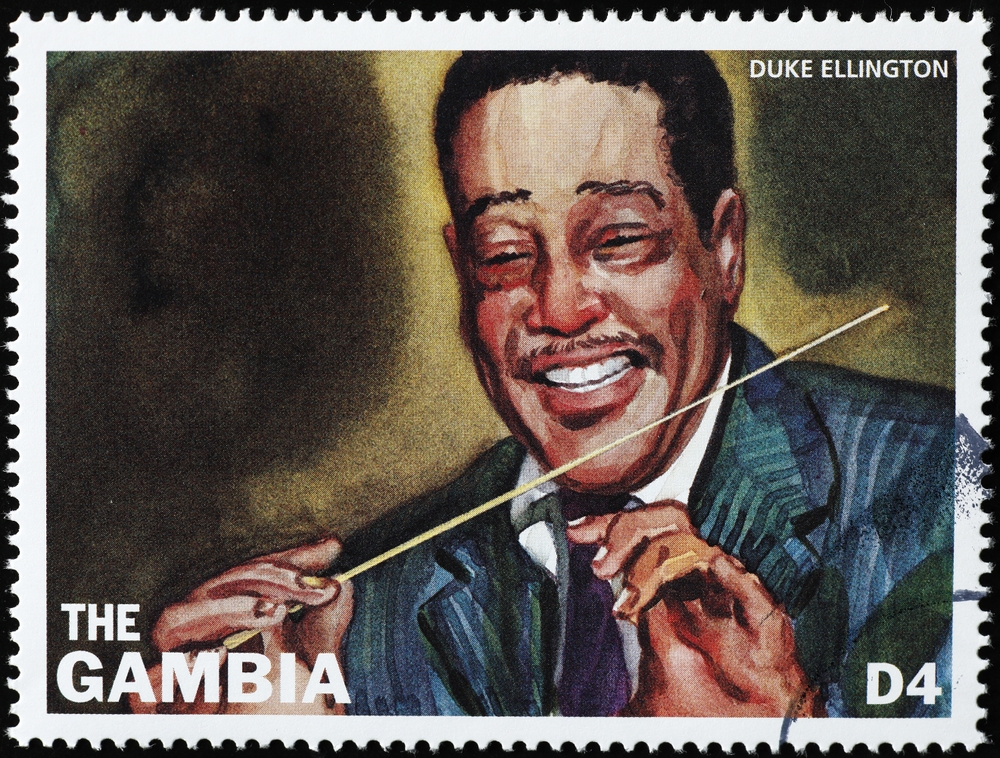
Duke Ellington’s C Jam Blues is perfect for your first year playing jazz. The melody uses only a few notes, making it super easy to learn and play confidently.
This jazz standard features an instantly recognizable tune that follows the traditional 12-bar blues form. You’ll quickly pick up the structure since it repeats predictably throughout the song.
The chord changes are simple blues progressions that most beginning musicians can handle. Even if you’re nervous about improvising, the easy blues changes make it accessible for anyone to try a solo.
Multiple arrangers have created versions specifically for student bands. Rick Stitzel’s arrangement includes counterlines and solid scoring that make your band sound fuller while keeping individual parts manageable.
The piece typically features solos for alto saxophone and trumpet, but any instrument can take a turn. This gives everyone in your band a chance to step into the spotlight.
C Jam Blues teaches you fundamental jazz concepts without overwhelming complexity. You’ll learn swing rhythm, basic improvisation, and ensemble playing all in one approachable song.
5. ‘Blue Bossa’ by Kenny Dorham – Beginner Jazz Ensemble Chart
Blue Bossa is perfect for your first year in jazz band. Kenny Dorham’s composition is one of the first tunes that jazz musicians learn because of its straightforward structure.
You’ll love how manageable this piece feels as a beginner. The chord progression follows predictable patterns that won’t overwhelm you while you’re still learning jazz fundamentals.
This great jazz standard is now available in playable arrangements for young players. Publishers specifically create versions that work well for developing musicians like yourself.
The melody sits comfortably in most instrument ranges. You won’t struggle with extreme high or low notes that can frustrate first-year students.
Blue Bossa teaches you essential jazz concepts without being too complex. You’ll practice swing rhythm, basic improvisation, and ensemble playing all in one piece.
Due to the simplicity of the piece it has become one of the most commonly played tunes amongst students. This means you’ll encounter it frequently in jam sessions and performances.
The arrangement offers flexibility for different ensemble sizes. Whether your band has fewer or more players, Blue Bossa adapts well to various configurations.
6. ‘A Night in Tunisia’ Simplified Version by Dizzy Gillespie
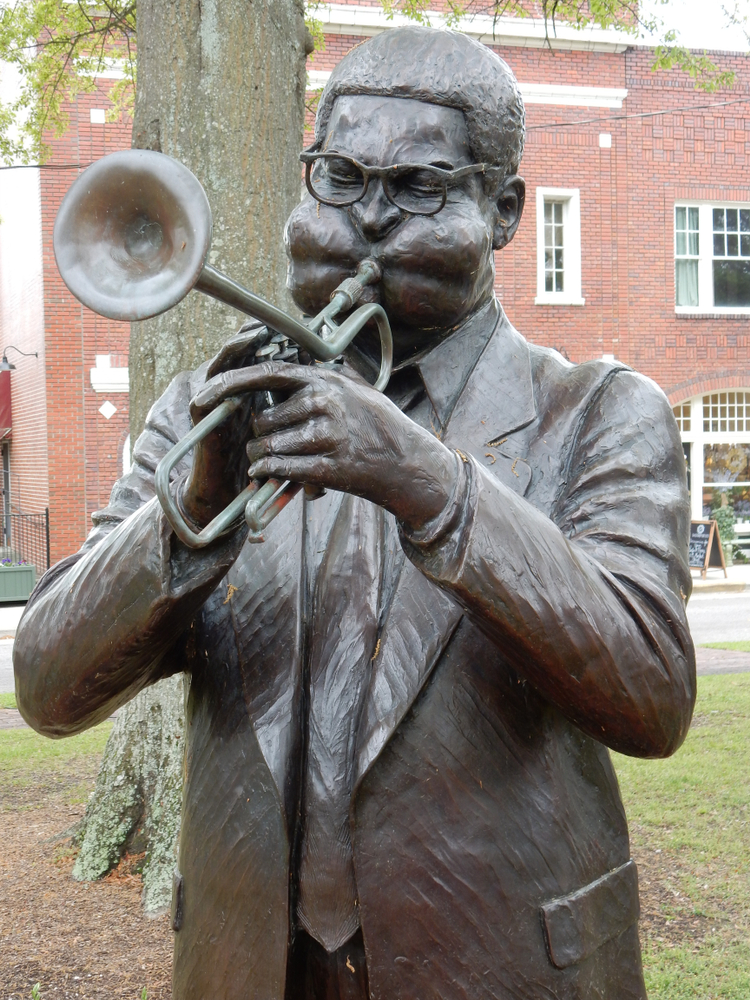
This classic bebop tune by Dizzy Gillespie works great for first-year students when simplified. You’ll love the catchy melody and exotic feel.
The original version has complex chord changes, but simplified arrangements focus on the main melody. This lets you concentrate on getting comfortable with jazz rhythms without worrying about difficult harmonies.
A Night in Tunisia features a distinctive bass riff that’s easy to learn and remember. Your rhythm section will have fun with this memorable pattern.
The tune has a Latin feel in the A sections that introduces you to different jazz styles. You’ll get experience with both swing and Latin rhythms in one piece.
Written in 1942, this song has been recorded by countless jazz legends. Learning it connects you to jazz history and gives you a tune that’s perfect for jam sessions later.
The melody sits well on most instruments and doesn’t require extreme ranges. You can focus on developing your jazz phrasing and articulation without technical challenges getting in the way.
Sheet music is widely available in various simplified arrangements perfect for beginning bands.
7. ‘Satin Doll’ by Duke Ellington for First-Year Jazz Ensemble
‘Satin Doll’ is perfect for your first year playing jazz ensemble music. This Duke Ellington classic features simple swing rhythms that help you learn basic jazz timing without overwhelming complexity.
The chord progressions are straightforward and repetitive. You’ll quickly memorize the harmonic patterns, which builds your confidence as a beginning jazz player.
Beginning jazz ensembles will sound great with this solid swing arrangement that teaches style basics through easy rhythms. The melody sits comfortably in most instruments’ ranges, so you won’t struggle with extreme high or low notes.
Most arrangements feature tutti scoring, meaning everyone plays together rather than complex individual parts. This approach helps your ensemble sound full and unified while you’re still learning to play as a group.
The song’s moderate tempo gives you time to think about your fingerings and breathing. You can focus on developing proper jazz articulation without rushing through difficult passages.
Multiple publishers offer Grade 1 easy arrangements specifically designed for student bands. These versions simplify the original while maintaining the song’s essential swing feel and classic jazz harmony.
8. Easy ‘Flying Home’ Jazz Chart by Lionel Hampton
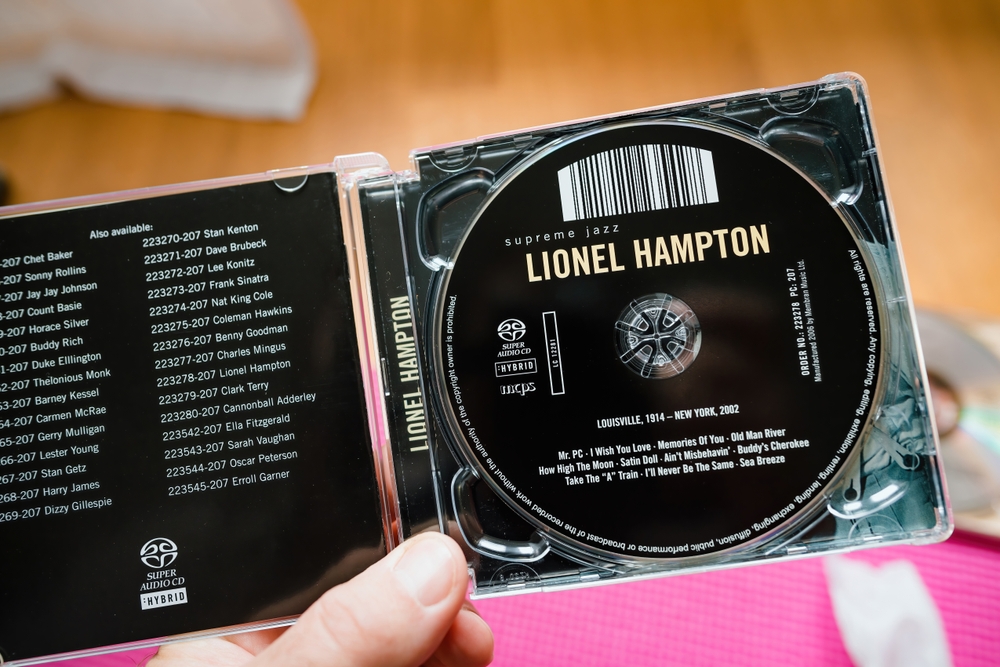
‘Flying Home’ is a perfect introduction to swing rhythm for your first-year jazz band. The original piece by Lionel Hampton became a big band standard that’s been arranged at beginner levels.
You’ll love how this tune teaches basic swing feel without overwhelming technical demands. The melody sits comfortably in most instruments’ ranges, making it accessible for new players.
Your rhythm section will get great practice with the straightforward chord progressions. The bass line walks naturally, while drums can focus on basic swing patterns without complex fills.
Jazz standards like ‘Flying Home’ have been performed by big bands since 1941, giving your students a connection to jazz history. The familiar melody helps students focus on style rather than struggling with difficult notes.
Beginner arrangements typically feature simplified harmonies and shorter solo sections. This lets your students experience improvisation without pressure to play complex solos.
The moderate tempo works well for developing swing articulation. Your horn players can practice jazz phrasing while your rhythm section builds steady time-keeping skills.
Most easy jazz band arrangements of ‘Flying Home’ include written-out solo sections, so students can sound confident even without improvisation experience.
9. ‘Watermelon Man’ by Herbie Hancock – Beginner Jazz Band
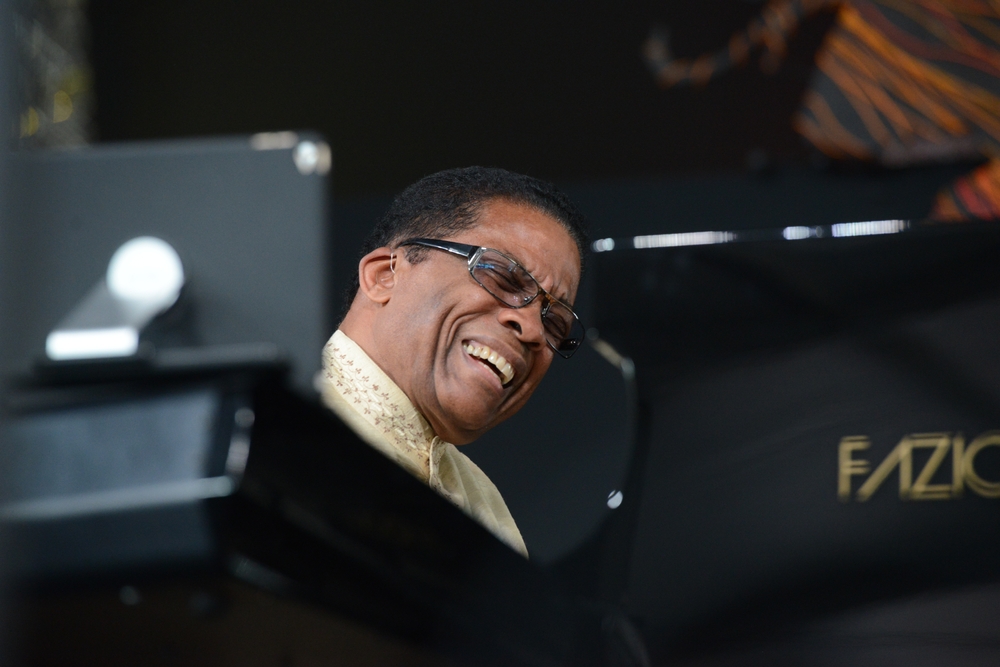
‘Watermelon Man’ is one of the best tunes to play as a beginner. Herbie Hancock’s funky composition gives you the perfect introduction to jazz without overwhelming complexity.
The song features a memorable melody that’s easy to learn and play. You’ll find the rhythm section parts are straightforward, making it ideal for developing your groove and timing skills.
What makes this piece special is its funk feel. The tune helps you explore different jazz styles beyond traditional swing, giving you valuable experience with various rhythmic patterns.
The chord progression is simple enough for beginning improvisers to navigate. You can start with basic scale patterns and gradually build your soloing confidence.
Sheet music arrangements are readily available for full jazz band instrumentation. Many versions exist specifically designed for student ensembles at different skill levels.
The piece works well for both small combos and full big bands. You’ll develop essential jazz skills like call-and-response playing and ensemble coordination.
‘Watermelon Man’ is also a crowd-pleaser that keeps audiences engaged. This helps build your performance confidence while learning fundamental jazz concepts.
10. ‘Moanin” by Bobby Timmons for Young Jazz Players
You’ll love starting your jazz journey with this classic tune that’s perfect for beginners. Bobby Timmons wrote this iconic piece, and it’s become one of the most popular jazz songs of all time.
The song works great for first-year students because it uses simple call-and-response patterns between piano and horns. This technique helps you learn how different instruments interact in jazz without getting overwhelmed by complex harmonies.
Your band director will appreciate that skilled arrangers have adapted this jazz classic specifically for beginning players. The medium tempo swing feel gives you time to process the rhythms while still feeling the energy of real jazz.
‘Moanin” introduces you to the soul jazz style that emerged in the late 1950s. The piece blends gospel influences with jazz fundamentals, making it easier to understand than more complex bebop tunes.
You’ll find this song accessible because it emphasizes strong melodies over intricate solos. The arrangement typically features a piano introduction, followed by saxophone sections and simple ensemble choruses that beginning bands can handle confidently.
11. ‘Birdland’ by Joe Zawinul – Jazz Ensemble Intro Chart
Joe Zawinul’s “Birdland” is perfect for your first year in jazz ensemble. The piece was originally composed for Weather Report and became a jazz fusion standard that countless artists have recorded over the years.
You’ll find simplified versions designed specifically for young players that keep the dynamic feel without overwhelming complexity. These arrangements maintain the drive and energy of the original while being totally manageable for beginners.
The easy jazz ensemble versions work great because they’re playable with standard instrumentation. You can perform it with 4 saxes, 3 trumpets, 3 trombones, and rhythm section.
Many arrangements include written solos for alto sax and trumpet so you don’t need to improvise yet. The lead trumpet part keeps things reasonable with the highest note only reaching a written G above the staff.
This piece teaches you essential jazz rhythms and chord progressions. You’ll experience authentic jazz fusion style while building confidence with music that sounds impressive but remains accessible for first-year students.
12. George Gershwin’s ‘Summertime’ Easy Jazz Arrangement
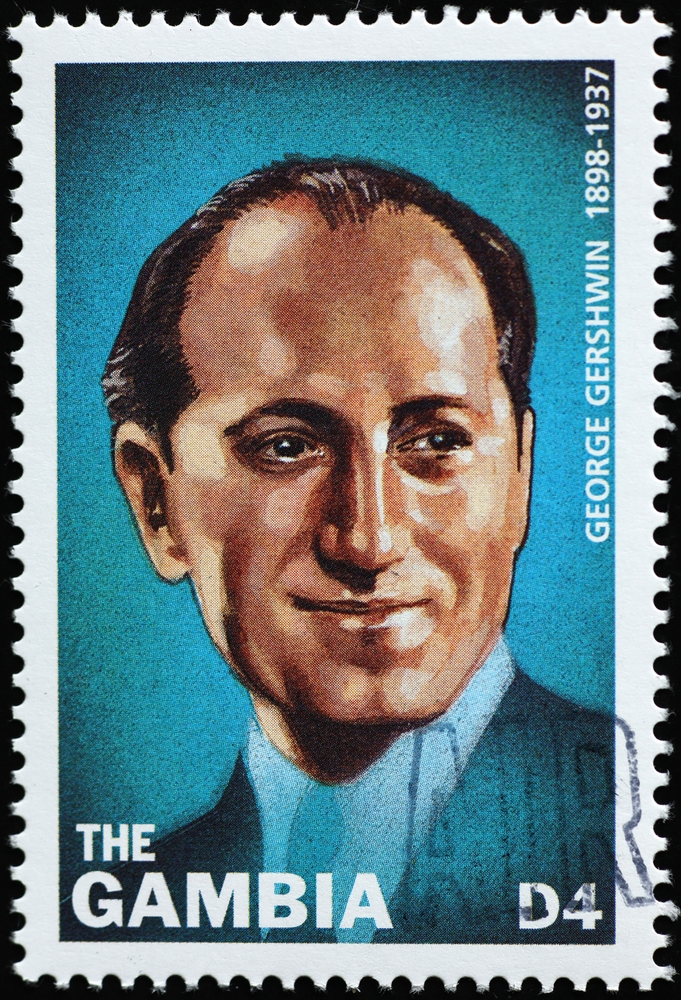
‘Summertime’ is perfect for your first year because it’s only 16 bars long and uses a simple 4/4 time signature. The melody is straightforward and memorable, making it easy to learn and play.
You’ll love how this piece introduces basic jazz concepts without overwhelming complexity. The chord progressions are simple enough for beginners but still sound authentically jazzy when you play them.
Many easy jazz arrangements exist specifically for beginning students. These simplified versions keep the essential character of the song while removing difficult technical challenges.
The song works great as a solo piece since the full melody is included in piano arrangements. This means you can practice independently without needing other musicians.
‘Summertime’ helps you develop swing rhythm naturally. The relaxed tempo gives you time to focus on proper technique while getting comfortable with jazz phrasing.
You can find free video tutorials that walk you through the basics step by step. These resources make learning even easier for first-year students.
13. ‘All Blues’ by Miles Davis for First-Year Bands
Miles Davis’s “All Blues” is perfect for your first year of band because it uses a simple 6/8 time signature that’s easy to count. You’ll find the rhythm flows naturally, making it less intimidating than complex jazz pieces.
The melody stays within a comfortable range for most instruments. Your embouchure won’t get overly tired, and you can focus on developing good tone quality instead of struggling with extreme high or low notes.
This piece teaches essential jazz blues concepts through a straightforward 12-bar blues form. You’ll learn fundamental jazz patterns that appear in countless other songs.
The chord changes move slowly, giving you time to think about each harmonic shift. This helps develop your ear for jazz harmony without overwhelming you with rapid progressions.
“All Blues” works well for mixed instrumentation bands since parts can be adapted for different skill levels. Your band director can simplify sections while keeping the essential character intact.
The swing feel in this piece is moderate and accessible. You’ll develop proper jazz articulation and phrasing without needing advanced technical skills that come later in your musical development.
14. ‘Chameleon’ by Herbie Hancock Simplified Jazz Chart
You’ll love playing this legendary jazz-rock fusion hit from Herbie Hancock’s famous Head Hunters album. The simplified arrangements make it perfect for beginning jazz students.
The melody line is straightforward and gets passed between different instruments. Alfred Music’s arrangement lets alto sax, tenor sax, trumpet, and trombone players all take turns with the main theme.
Your rhythm section will stay busy with the iconic bass vamp that repeats throughout the song. This repetitive pattern helps new players lock into the groove without getting overwhelmed by complex changes.
The Easy Jazz Ensemble Series version simplifies the original’s tricky elements while keeping the essential feel. You won’t need advanced technical skills to sound great on this tune.
Your band director will appreciate how this piece teaches jazz-rock fusion concepts. The steady groove helps beginning players develop their sense of time and pocket.
Students should listen to both the original Herbie Hancock recording and Maynard Ferguson’s version to understand the intended style. This listening practice builds your musical vocabulary while having fun with one of jazz’s biggest hits.
15. ‘Take Five’ Beginner Band Version by Paul Desmond
‘Take Five’ might seem tricky at first, but simplified versions make it perfect for your first year. The unusual 5/4 time signature actually helps you understand rhythm patterns beyond basic 4/4 time.
You’ll find simple jazz piano versions for beginners that break down the complex parts. These arrangements remove difficult elements while keeping the song’s cool jazz feel.
The melody uses a comfortable range that won’t strain your embouchure. Most beginner versions stick to quarter notes and half notes, avoiding complex rhythms.
This piece introduces you to jazz without overwhelming technical demands. The repetitive main theme helps build your confidence with each play-through.
You can find free sheet music arrangements adapted for school bands. These versions often include simplified parts for every instrument.
Playing ‘Take Five’ teaches you to count in five instead of four. This skill prepares you for more advanced music later in your studies.
The song’s moderate tempo gives you time to think about fingerings and breathing. You won’t feel rushed like you might with faster jazz tunes.
16. ‘Salt Peanuts’ by Dizzy Gillespie – Easy Jazz Band Chart
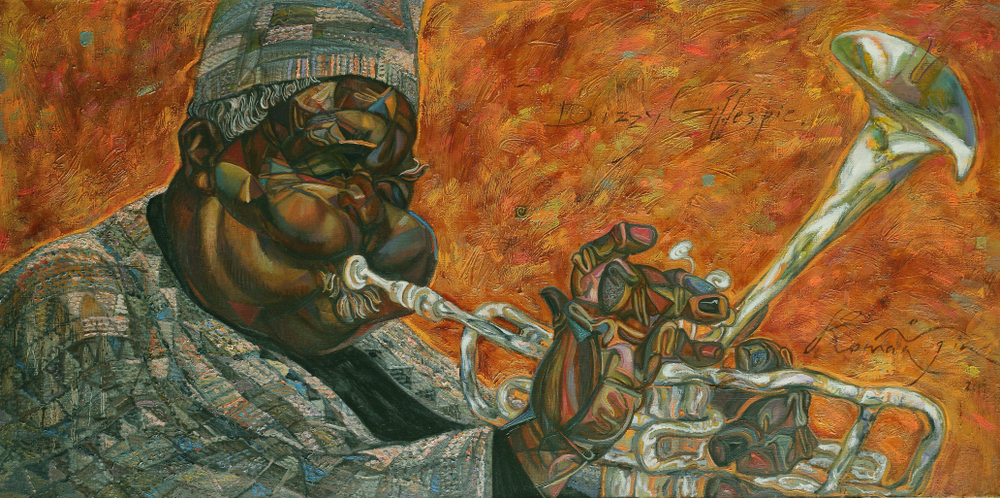
You’ll love this bebop classic that’s been carefully arranged for beginning jazz students. The carefully constructed arrangement for younger players adds the fun element that makes learning jazz enjoyable.
Your alto sax and trumpet players get to shine with the melody at the top. Then the rest of your band joins in for what’s described as a lively, swingin’ romp that introduces students to this revered standard.
The piece works great because it has accessible ranges and easy rhythms. You don’t need to worry about your first-year students struggling with complex fingerings or difficult note patterns.
Several publishers offer beginner-friendly versions. Mark Taylor’s arrangement through Hal Leonard is particularly popular with school bands.
Your students will get exposure to authentic bebop style without the technical challenges of the original. The arrangement includes solo space for trumpet with both written-out and ad-libbed options, so nervous beginners can read while confident players can improvise.
This chart gives your band a taste of Dizzy Gillespie’s genius while keeping everything manageable for new jazz musicians.
17. ‘Now’s the Time’ by Charlie Parker First Year Arrangement
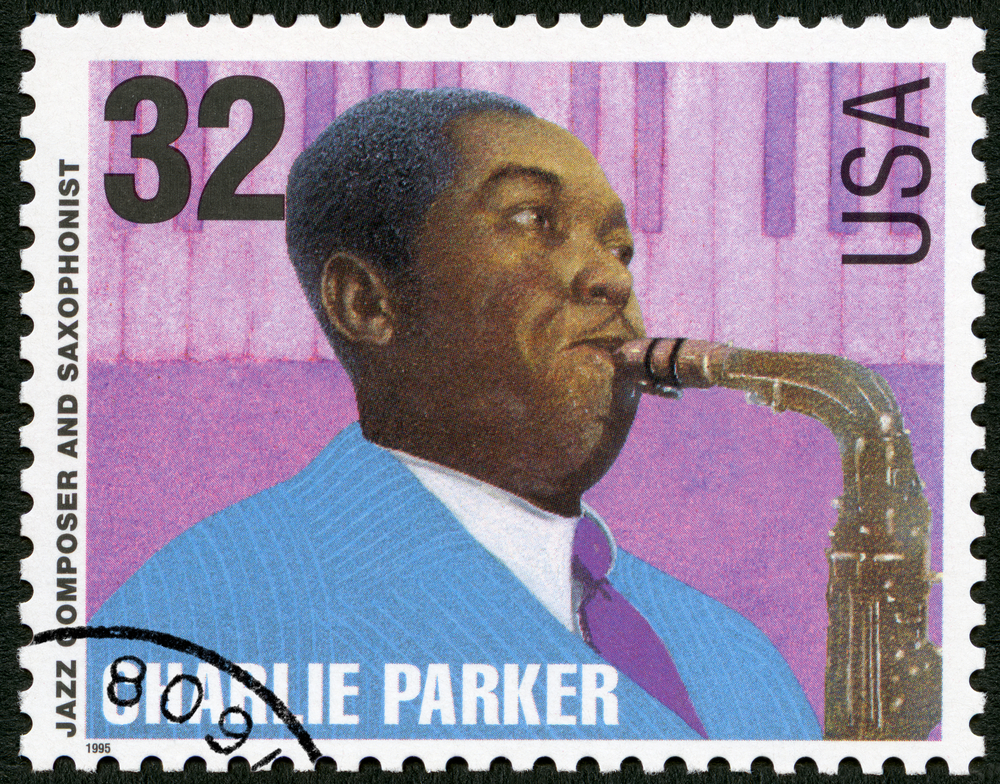
Charlie Parker’s bebop classic gets a makeover that’s perfect for your first year of jazz band. The original Charlie Parker arrangement has been adapted specifically for beginning jazz ensembles.
This piece teaches you the fundamentals of swing rhythm without overwhelming complexity. The melody sits comfortably in most instruments’ ranges, so you won’t struggle with extreme high or low notes.
The chord progression follows a basic blues structure that’s essential for jazz education. You’ll learn the twelve-bar blues form, which appears in countless jazz standards throughout your musical journey.
The arrangement simplifies Parker’s lightning-fast bebop lines into manageable phrases. This lets you focus on getting the swing feel right rather than worrying about technical difficulties.
Your rhythm section will love this tune because it reinforces basic jazz comping patterns. The bass line walks naturally, and the drum parts emphasize the swing beat without complicated fills.
The solo sections are written out initially, giving you a roadmap for improvisation. As you get comfortable, you can start adding your own ideas over the familiar chord changes.
This arrangement bridges the gap between concert band music and authentic jazz repertoire perfectly.
18. ‘Misty’ by Erroll Garner – Beginner Jazz Ensemble
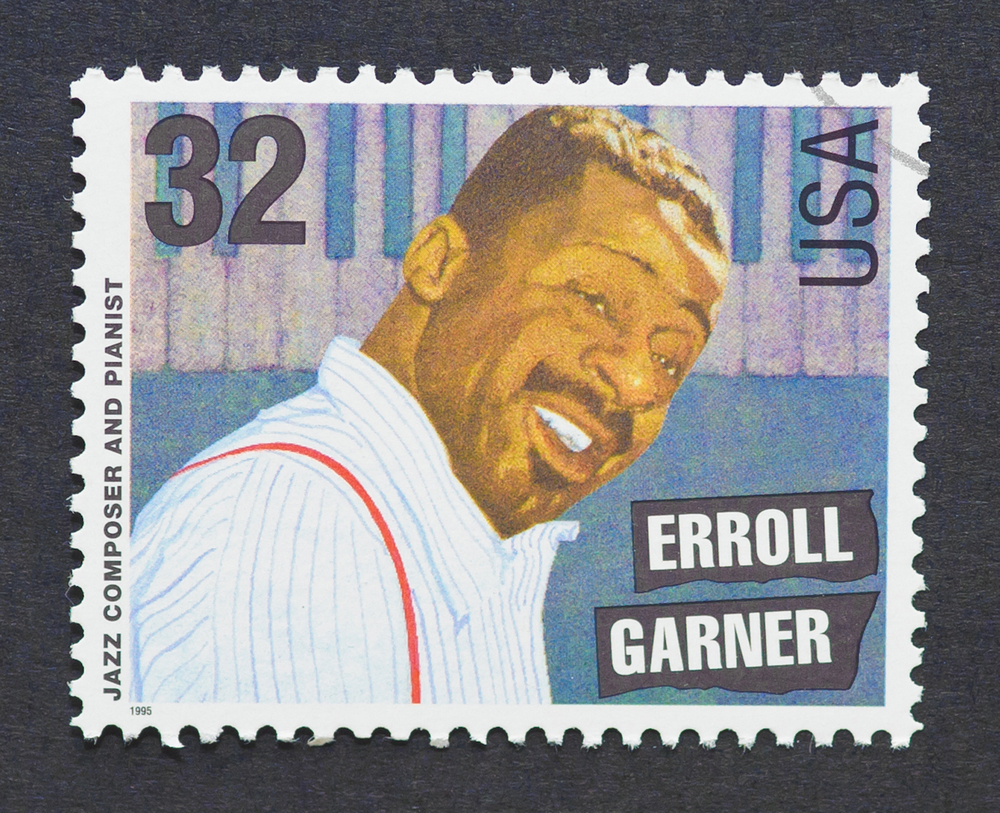
You’ll love introducing your first-year students to this classic jazz standard. Erroll Garner originally wrote ‘Misty’ as an instrumental, making it perfect for developing your ensemble’s melodic understanding.
The piece works great for beginners because it has easy ranges and simple rhythms. Your students won’t struggle with complex fingerings or challenging note patterns while they’re still learning jazz fundamentals.
‘Misty’ arrangements for young jazz combos are very playable and customizable. You can feature different instruments like clarinet, soprano sax, alto sax, tenor sax, or trumpet as soloists.
The melody is instantly recognizable, which helps your students stay engaged. They’ll feel more confident playing a tune they’ve heard before, even if they’re new to jazz.
Arrangements designed for younger groups maintain easy ranges and rhythms while creating a powerful ensemble sound. Your beginning band will sound much more advanced than their skill level suggests.
The ballad tempo gives your students time to think about their notes and breathing. They won’t feel rushed or overwhelmed by fast passages that often discourage new players.
19. ‘Freddie Freeloader’ Starter Chart by Miles Davis
This simplified version of Miles Davis’s jazz classic gives you a perfect introduction to blues-based jazz. The beginning band arrangement features optional parts for multiple instruments, making it flexible for your ensemble size.
You’ll love how this piece teaches fundamental jazz concepts without overwhelming complexity. The original comes from Davis’s legendary “Kind of Blue” album, but starter charts adapt it specifically for new players.
The song uses a twelve-bar blues progression in Bb, which helps you learn one of jazz’s most important chord patterns. This foundation appears in countless jazz standards you’ll encounter later.
Your rhythm section gets excellent practice with the laid-back swing feel. The melody is memorable and not too challenging, letting you focus on developing proper jazz articulation and phrasing.
Many arrangements include suggested solos and scale charts, giving you early exposure to improvisation concepts. You can start with simple approaches before developing more complex ideas.
The piece works great for festivals or performances because audiences recognize the tune. It sounds sophisticated while remaining accessible to beginning players, building your confidence in jazz performance.
20. ‘Mercy, Mercy, Mercy’ by Joe Zawinul Easy Jazz Band
This classic jazz tune by Joe Zawinul is perfect for your first year playing jazz. The easy rock feel arrangement by Mike Story makes it accessible without losing its cool factor.
You’ll love how manageable this piece is as a beginner. The trumpet 1 part only goes up to written D on the fourth line, so you won’t strain your range. The tempo sits comfortably around 100 beats per minute.
The melody is incredibly catchy and memorable. You’ll find yourself humming it long after practice ends. This helps you internalize the jazz feel naturally.
Your piano player gets a simple written-out solo instead of having to improvise. This takes pressure off while still giving them a featured moment.
The arrangement works with flexible instrumentation options. Your band can play it even if you’re missing some standard jazz band instruments.
At just 2:30 long, it’s the perfect length for building confidence. You’ll master it quickly while learning essential jazz articulation and swing feel that transfers to other pieces.
21. ‘Night Train’ by Jimmy Forrest – Simplified Jazz Ensemble
You’ll love this classic jazz standard that’s perfect for getting your feet wet with swing music. Night Train is a twelve-bar blues instrumental that Jimmy Forrest first recorded in 1951.
The simplified versions make this piece totally doable for beginners. You get opportunities for different sections with simplified trombone parts, so even your weakest players can participate confidently.
What makes this great for first-year students is its flexibility. The arrangement works for smaller ensembles if you don’t have a full band yet.
You can choose between written solos or try improvising when you’re ready. The catchy melody and triplet feel provide many opportunities for growth in your developing jazz skills.
The twelve-bar blues structure is simple enough that you’ll catch on quickly. Plus, listening to the original Jimmy Forrest recording will help you understand the swing style you’re aiming for.
This piece introduces you to authentic jazz language without overwhelming technical demands.
22. ‘Sonny Moon for Two’ by Sonny Rollins Beginner Jazz Chart

You’ll love this tune as a first-year jazz student because it’s built on a simple 12-bar blues structure. The melody follows a straightforward Bb minor pentatonic scale that’s easy to learn and memorize.
Most teachers recommend starting with ‘Sonny Moon for Two’ because it’s a great beginner blues tune that doesn’t overwhelm new players. The chord progression uses basic blues changes that you’ll encounter in dozens of other jazz standards.
Your rhythm section gets to play the melody rhythm instead of comping during the head. This makes it perfect for developing your ensemble skills and listening abilities as a beginning jazz musician.
The tune typically gets played in Bb, which is comfortable for most band instruments. You can focus on getting the swing feel right without worrying about complex chord changes or tricky melodies.
Since Sonny Rollins wrote this as a 12-bar blues, you’ll build confidence with one of jazz’s most important song forms. The simple melody gives you room to add your own style while staying within safe musical boundaries.
Free jazz band charts are available online, making this accessible for school programs with tight budgets.
23. ‘Song for My Father’ by Horace Silver Entry-Level Arrangement
This Horace Silver classic works perfectly for your first-year band students. The Latin-style arrangement features a distinctive bass line groove that’s easy to follow and remember.
Your students will love the laid-back Latin feel that makes this piece approachable. The melody isn’t too complex, so beginners can focus on rhythm and style rather than struggling with difficult note patterns.
The expertly adapted easy-level arrangement introduces young musicians to jazz fundamentals without overwhelming them. Your trumpet section gets to shine with the main melody while saxophones add simple counter lines.
This piece teaches essential jazz concepts like swing feel and Latin rhythms. Students learn to play with a relaxed groove that builds their confidence and musicality.
The rhythm section parts are well-written and give your bass and drum players clear guidelines. Your percussion section can explore auxiliary instruments that add authentic Latin flavor.
This popular jam session tune helps students connect with real jazz repertoire they’ll encounter throughout their musical journey.
24. ‘St. Thomas’ Easy Jazz Chart by Sonny Rollins
You’ll love this catchy Latin tune that jazz legend Sonny Rollins created. It’s become one of the most popular beginner jazz pieces for good reason.
The melody is super memorable with its punchy, distinctive riff that sticks in your head. You won’t struggle to remember how it goes during practice or performance.
St. Thomas works great for beginning jazz students because it has a straightforward chord progression. The harmony isn’t too complex for your first year of jazz.
Your band director can find easy jazz combo arrangements specifically designed for student groups. These simplified versions keep the essential character while making it playable for beginners.
The Latin feel gives you a chance to work on different rhythmic patterns without being overwhelming. You’ll develop your sense of groove and timing naturally.
Sheet music is widely available in various arrangements for different instruments. Whether you play saxophone, piano, guitar, or bass, you can find a version that works for your skill level.
The piece teaches you important jazz concepts like swing feel and improvisation in an accessible way.
25. ‘Cantaloupe Island’ by Herbie Hancock – First Year Jazz Band
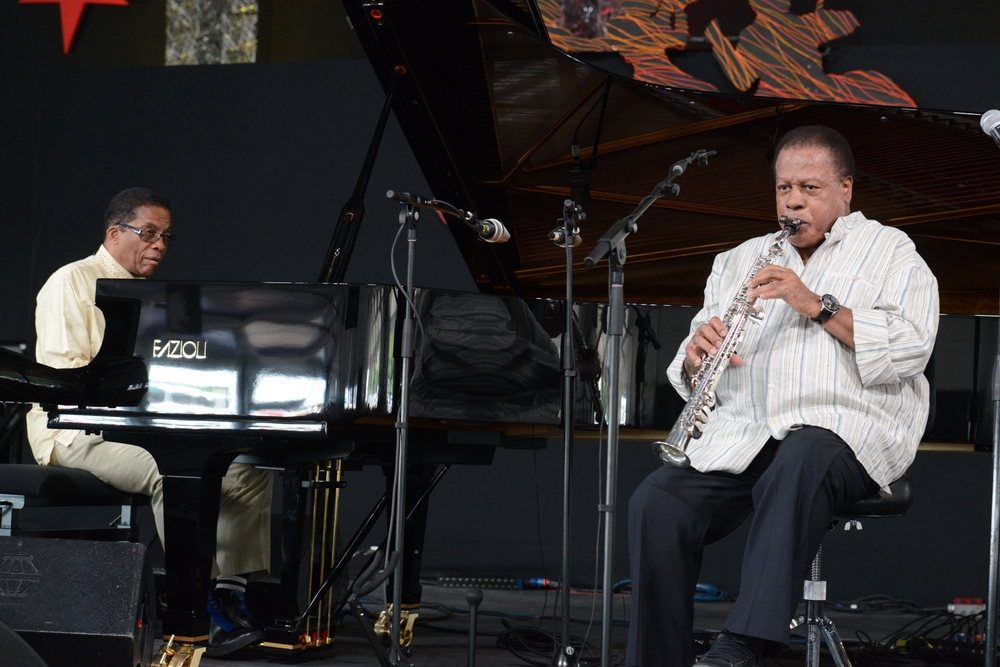
You’ll love this funky Herbie Hancock classic because it’s perfect for beginners. The song uses only three chords, making it super manageable when you’re just starting out.
The repetitive groove helps you lock into the rhythm without getting overwhelmed. You can focus on playing together as a band rather than worrying about complex chord changes.
Your band director will appreciate that Mike Kamuf’s arrangement is designed specifically for young players. The chart includes written solos for tenor sax and trumpet, so you don’t have to improvise if you’re not ready yet.
The melody is catchy and memorable, which makes it easier to learn and more fun to play. You’ll find yourself humming it after practice.
The lead trumpet part only goes up to a written high F, with an optional G. This keeps the range reasonable for first-year players who are still developing their chops.
The hip, funky feel gives you a taste of different jazz styles beyond traditional swing. You’ll get experience with Latin-influenced rhythms that are common in modern jazz.
Sheet music and arrangements are widely available from multiple publishers, making it easy for your director to find the right version for your group.


